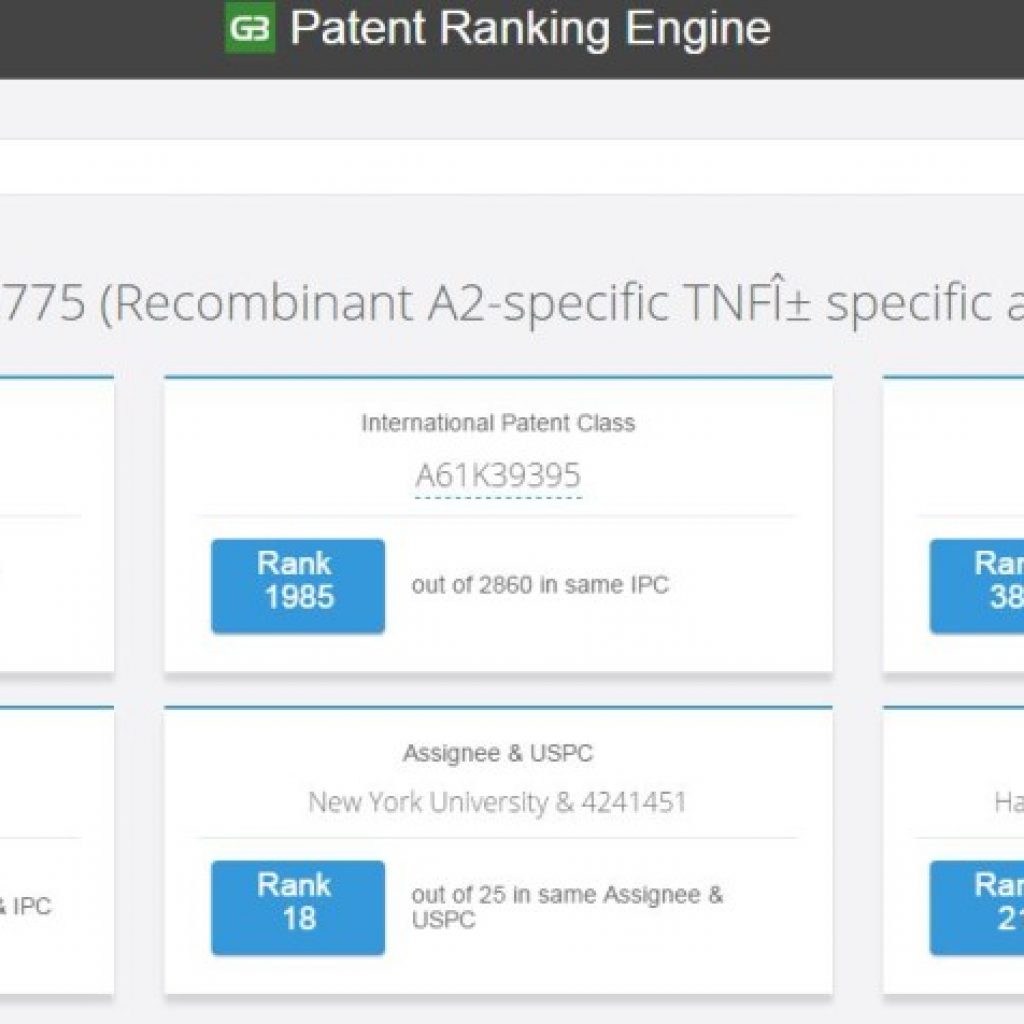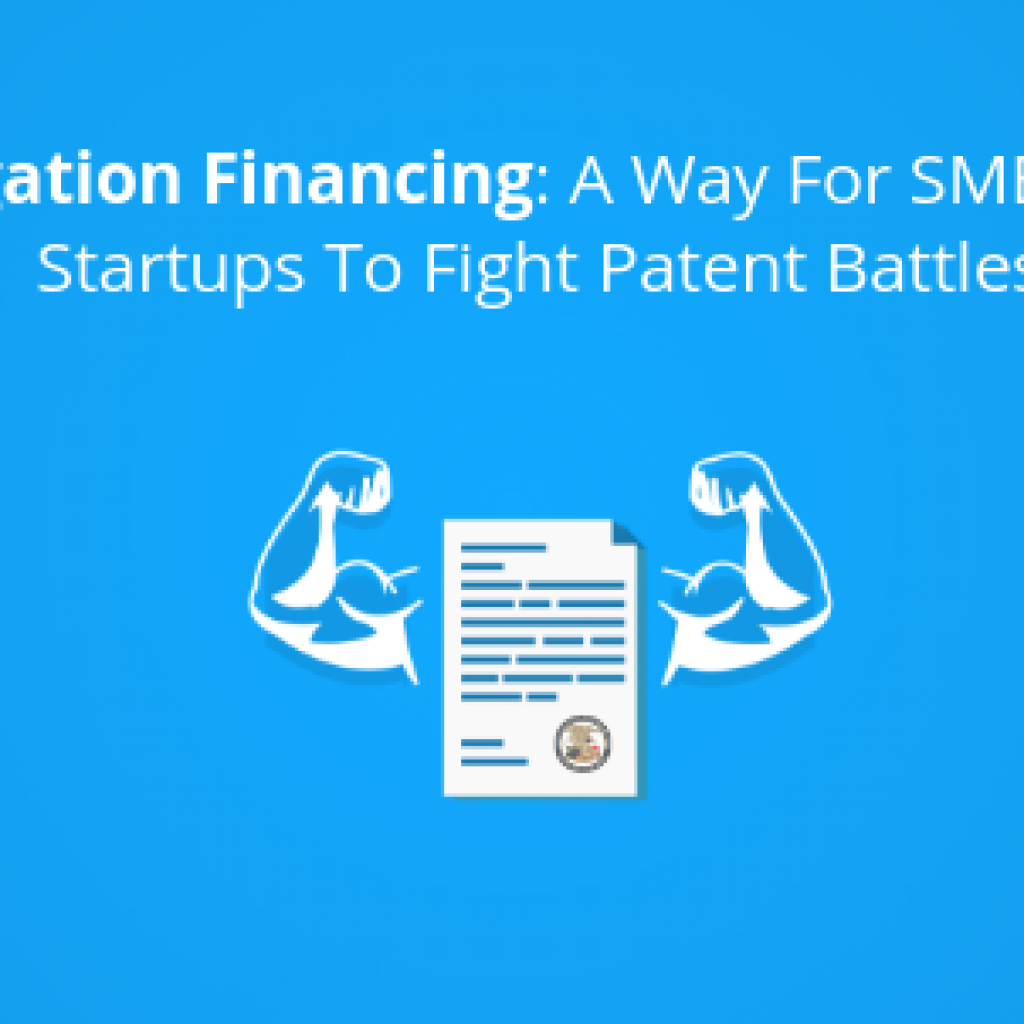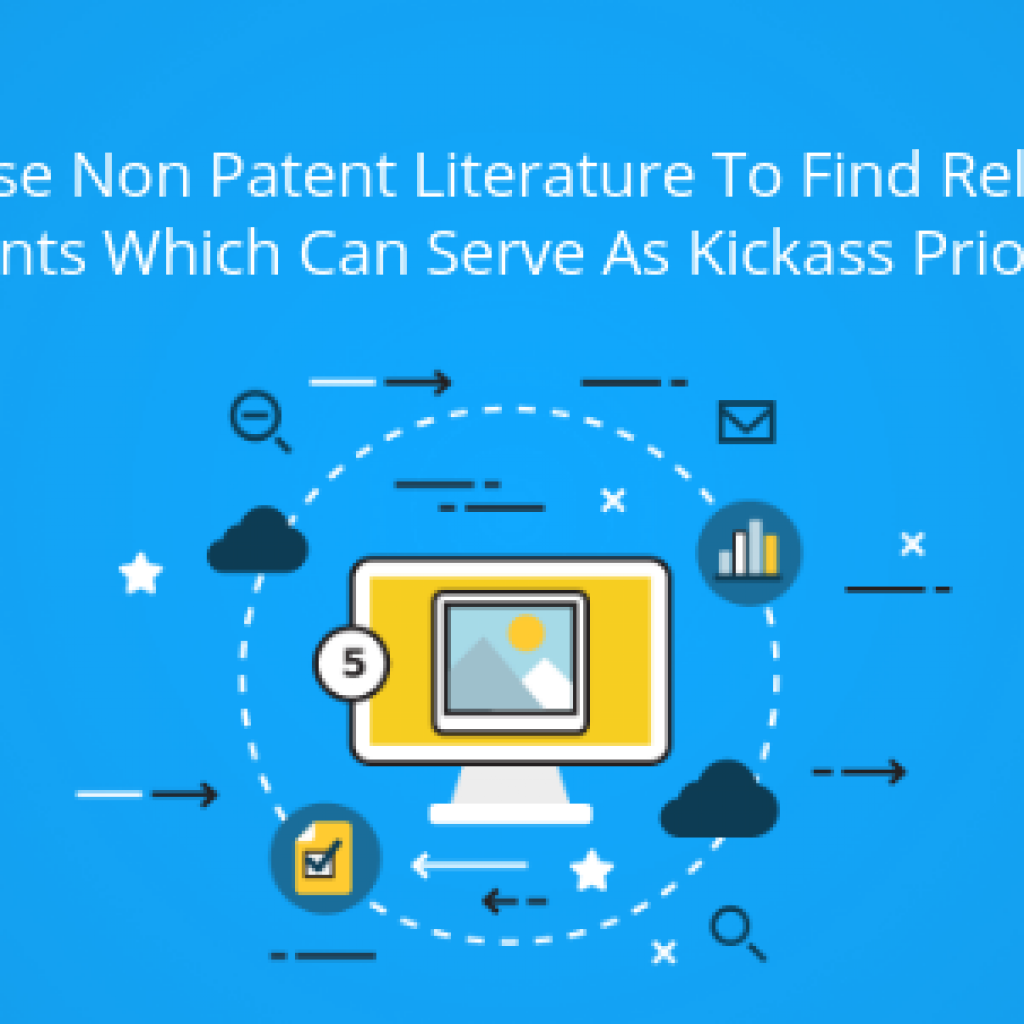The widespread adoption of WiFi 6 across various devices and industries has made licensing negotiations more complex and time-sensitive. Product launch deadlines and compliance pressures leave little room for delays. Yet, analyzing the large volume of patents, technical documents, and TGAX submissions to identify weak patent claims makes the process anything but quick.
Failing to challenge weak patents will have costly consequences. Licensing them increases royalty expenses and exposes the company to disputes or litigation if invalidated later.
This article explores how licensing teams can minimize the risks and costs of licensing negotiations using the WiFi 6 patent landscape analysis.
Explore the WiFi 6 patent landscape on GreyB’s proprietary IP research workspace, Slate. Easily navigate through technical insights into global filings, key contributors, and emerging innovators, and quickly locate relevant meeting documents in WiFi 6 technology.
Fill out the form below to access the WiFi 6 patent landscape.
Improve your licensing position with WiFi 6 patent landscape
Consolidating all WiFi 6-related data in a single, structured, and searchable repository enables licensing teams to work more efficiently under tight deadlines. They can quickly filter relevant patents, access TGAX discussions tied to specific technologies, and uncover critical prior art without losing time navigating fragmented sources.
Here’s how having all relevant WiFi 6 data in one place, like patent landscape, helps solve research challenges, save time, and improve licensing outcomes
1) Identifying top companies leading the WiFi 6 development
In a case on the Spatial Reuse Technique in WiFi 6, specifically the reuse of TXOP by another STA, the WiFi 6 patent landscape analysis helped identify leading contributors such as Qualcomm, Huawei, and Intel.
Tech Focus of WiFi 6 Patents
Without a structured WiFi 6 patent landscape, locating all companies working on such a niche tech would be incredibly difficult. Many companies align their R&D efforts to address ongoing issues within standard bodies. This makes their contributions highly valuable for invalidity searches. However, these contributions are fragmented across multiple sources and are often not visible in traditional patent databases. This lack of accessibility makes it difficult to focus on the portfolios of companies leading innovation in specific technology areas.
By examining the portfolios of the following companies before the cut-off date, one of Qualcomm’s documents was categorized as 102 prior art.
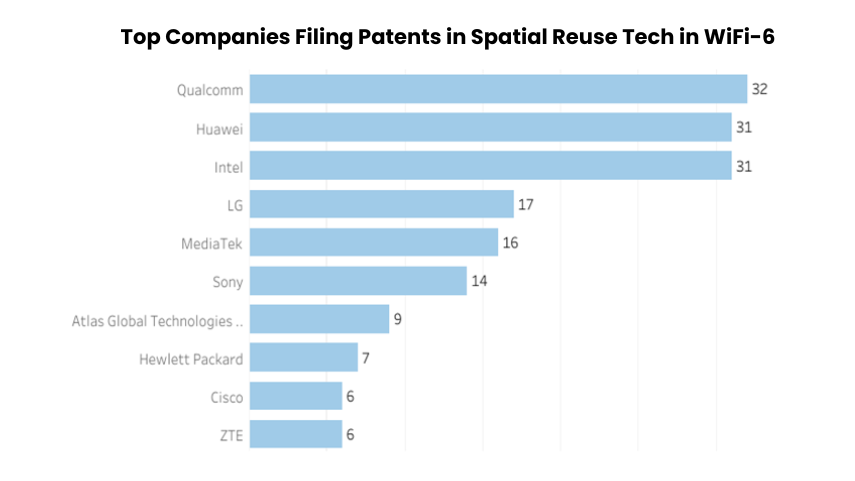
Access the complete data on Slate
Having a clear view of the relevant patent and technical landscape made it possible to pinpoint key documents that might otherwise have been buried in scattered sources. This challenged the weak claims and strengthened the negotiation position of the client.
2) Navigating through the meeting documents
In a recent project, the team needed to index RU Tone sizes (26-RU, 52-RU) within the OFDM structure to support the prior art search. Using tagging capabilities, filtering discussions specific to OFDMA technology, and identifying a key document discussing RU Tone allocations before the cut-off date became easy.
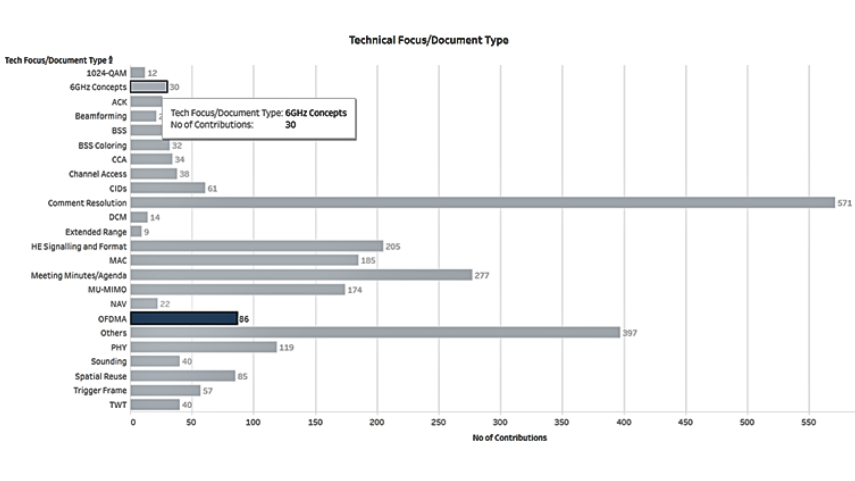
The following document, buried deep within over 4000 technical submissions, provided critical insights and strengthened the negotiation position.
While TGAX is recognized as a hotspot for prior art in WiFi, traditional search methods lack the precision needed to extract relevant information, especially under tight deadlines.
A structured document repository allowed the team to filter TGAX documents based on specific technical criteria instantly. This eliminated unnecessary data and highlighted the most relevant prior art contributions.
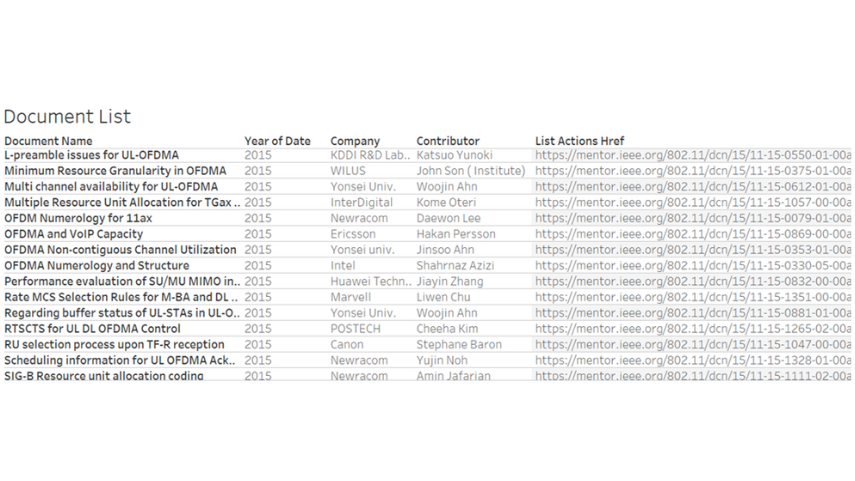
3) Structured WiFi-6 patent landscape search
leveraging targeted keyword strategies and precise date filtering changed the course of a recent invalidity search for HE-STF signal periodicity. The structured global patent landscape search helped locate key patents from Atlas Global Technologies and NXP USA.
Running the same query on a public database like Google Patents would generate numerous results, but most would be irrelevant or unrelated to Wi-Fi 6 technologies.
The core issue is the lack of a dedicated repository tailored to Wi-Fi 6 patents.
The excerpt below details HE-STF periodicity values, providing insights that strengthened the client’s negotiation position, challenged weak claims, and significantly reduced unnecessary licensing costs.
4) In-Document searching
The team conducted a prior art search for HE-STF periodicity, identifying all references to the term across lengthy technical documents. However, authors used multiple variations of “periodicity,” such as “cycle,” “period,” and “interval,” making manual searches inefficient and prone to missing key mentions.
The smart document reading interface in the workspace mapped synonyms and term variations, automatically capturing every relevant occurrence. Slate Workspace’s Synonyms Bank enabled the team to search for “HE_STF periodicity” and retrieve results for related terms like “short training field” and “cycle.”
Beyond synonym mapping, the Tomograph broke down the document paragraph by paragraph. It automatically highlighted instances of the searched terms, making it easy to pinpoint key insights without endlessly scrolling through dense technical content.
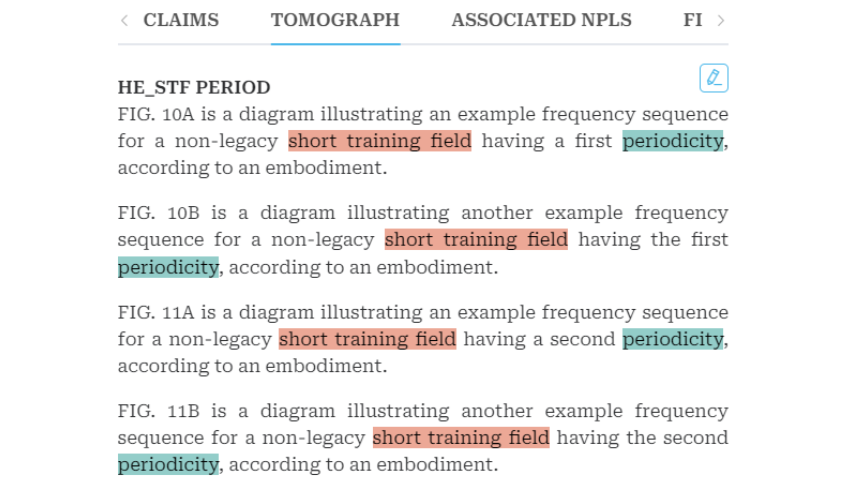
Explore the WiFi 6 patent landscape in detail for stronger licensing negotiations
A centralized and searchable workspace for Wi-Fi 6 patents enhances licensing negotiations and strengthens your intellectual property (IP) position. Whether you need to identify top contributors, navigate TGAX documents, or find prior art for invalidation, this approach ensures efficiency.
The next question is, “How do I tailor this to my organization’s needs?”
With GreyB’s WiFi 6 patent landscape dashboard, you can focus on a specific technology within WiFi 6 or target a particular company’s patent portfolio.
Fill out the form below to book a personalized demo and discover how the dashboard can align with your goals and challenges.
Take Control of the Licensing Outcome
Fill the Form Today






